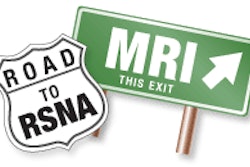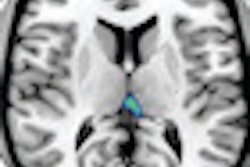"Compared to currently available imaging techniques, such as small bowel follow-through and CT, MRI can be used in patients with chronic bowel diseases for diagnosis and follow-up," said study co-author Cristiana Bonifacio, MD, from the Instituto Clinico Humanitas in Milan. "[MRI] gives additional information about extraintestinal signs of Crohn's disease and can allow repeated evaluations without use of x-ray that can be dangerous in young patients."
The prospectively study enrolled 32 patients (15 males, 17 females; mean age, 40.1 years) with known ileocolonic Crohn's disease. The group underwent both 1.5-tesla and 3-tesla MR at the same time. Biphasic oral contrast and intravenous gadolinium were administered to each patient. Ileocolonoscopy was used as the reference standard for luminal disease.
Sensitivity, specificity, and accuracy were calculated for five signs of active disease: localization, wall enhancement, strictures, enteroenteric fistulas, and ulcers.
In the analysis, the researchers determined that 3-tesla MRI proved equally sensitive, specific, and accurate compared to 1.5-tesla MRI.
Accuracy for 3-tesla MRI in the localization of Crohn's disease was 95%, compared with 86% for 1.5-tesla MRI. Accuracy for bowel wall enhancement with 3-tesla MRI was 83%, compared with 80% for 1.5-tesla MRI. The accuracy for strictures was 90% for 3-tesla MRI, while 1.5-tesla MRI's accuracy was 80%. For enteroenteric fistulas, 3-tesla MRI's accuracy was 93%, compared with 90% for 1.5-tesla MRI.
The researchers also found that signal-to-noise ratio increased with 3-tesla MRI compared to 1.5-tesla MRI, while image acquisition time with 3-tesla MR (15 minutes) was shorter than with 1.5-tesla MRI (30 minutes). Patient compliance also was better during the 3-tesla MRI exam due to the shorter image acquisition time.
"Inflammatory bowel disease patients require repeated assessment of their disease in order to follow-up the disease itself and the response to medications," Bonifacio said. "It is usually done using colonoscopy, which is uncomfortable, invasive, and not free from complications. In particular, 3-tesla MRI is also able to see ulcers and can replace the use of invasive techniques."
Bonifacio and colleagues plan to recruit more patients for the study through June 2011 to have a larger population and expanded evidence on the role of 3-tesla MRI in Crohn's disease.
"Our research will then focus on the role of MRI for the staging and grading of Crohn's disease and the impact of new medications on the natural history of the disease," she added.



















